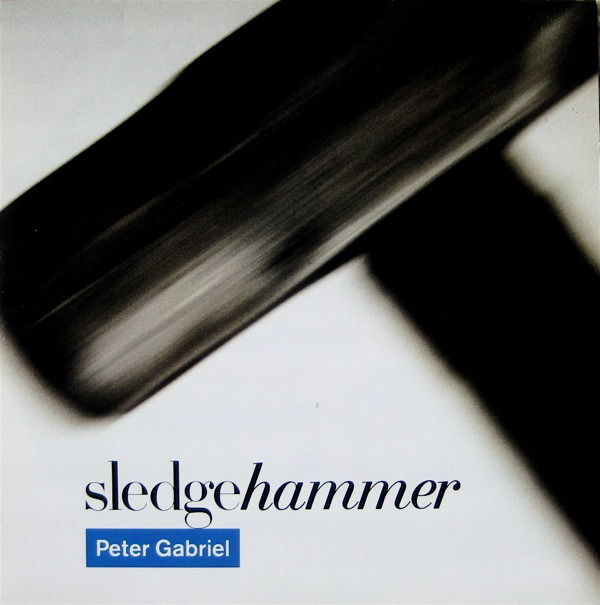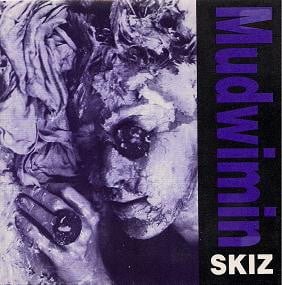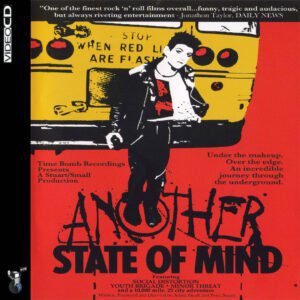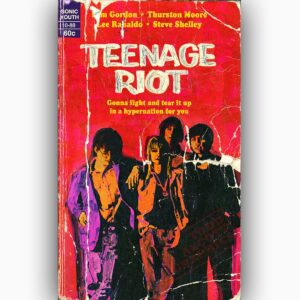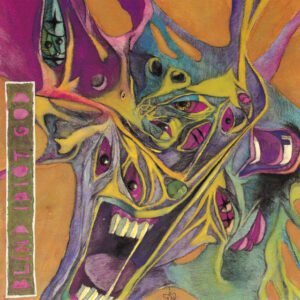Peter Gabriel – Sledgehammer
Description
| “Sledgehammer” | ||||
|---|---|---|---|---|
 |
||||
| Single by Peter Gabriel | ||||
| from the album So | ||||
| B-side |
|
|||
| Released | 14 April 1986 | |||
| Studio | Ashcombe House (Bath, England) | |||
| Genre | ||||
| Length |
|
|||
| Label | ||||
| Songwriter(s) | Peter Gabriel | |||
| Producer(s) |
|
|||
| Peter Gabriel singles chronology | ||||
|
||||
“Sledgehammer” is a song by the English rock musician Peter Gabriel. It was released in April 1986 as the lead single from his fifth studio album, So (1986).[2] It was produced by Gabriel and Daniel Lanois. It reached No. 1 in Canada on 21 July 1986, where it spent four weeks; No. 1 on the Billboard Hot 100 chart in the United States on 26 July 1986;[3] and No. 4 on the UK Singles Chart, thanks in part to its music video. It was his biggest hit in North America and ties with “Games Without Frontiers” as his biggest hit in the United Kingdom.
The song’s video won a record nine MTV Video Music Awards at the 1987 MTV Video Music Awards[4] and Best British Video at the 1987 Brit Awards.[5][6] The song also saw Gabriel nominated for three Grammy Award for Best Male Rock Vocal Performance, Record of the Year and Song of the Year.[7] In a 2005 poll conducted by Channel 4 the music video was ranked second on their list of the 100 Greatest Pop Videos.[8]
Background
“Sledgehammer” was among the last songs recorded for the album and was presented to the band as they were packing up their equipment. The original intention was to include the song on Gabriel’s next album after So.[9] Manu Katché was preparing to board a taxi and return home to Paris when Gabriel coaxed him into recording “Sledgehammer”.[10] Katché achieved his drum part in one take and was asked by Gabriel to record a few more passes, although Katché insisted that any subsequent attempt at recording another drum track would be inferior.[11] Tony Levin opted to record his part on a fretless bass with a pick.[12]
Gabriel noted that he was influenced by soul music when writing “Sledgehammer” and also considered recording a soul-oriented album with a mixture of covers and original compositions.
As a teenager, soul music was one of the things that made me want to be a musician. It was really passionate and exciting… Wayne Jackson, who plays on that track, was also with Otis Redding and was touring with him when I saw them in London. So that was a thrill for me, just to get a whole lot of fan stories. But I think the song was more influenced by many of those Stax and Atlantic tracks rather than Otis particularly.”
— Peter Gabriel, July 1986[13]
The song also features a synthesised shakuhachi flute generated with an E-mu Emulator II sampler.[14] Gabriel said that the “cheap organ sound” came from an expensive Prophet-5 synth, which he regarded as “an old warhorse” sound tool.[15] The backing vocals were sung by P. P. Arnold, Coral “Chyna Whyne” Gordon, and Dee Lewis, who also did the backing for “Big Time“.
Release
“Sledgehammer” is Gabriel’s only US No. 1. It replaced “Invisible Touch” by his former band Genesis; coincidentally, that group’s only US No. 1. Genesis lead singer Phil Collins later jested about the occurrence in a 2014 interview, stating, “I read recently that Peter Gabriel knocked us off the No. 1 spot with ‘Sledgehammer’. We weren’t aware of that at the time. If we had been, we’d probably have sent him a telegram saying: ‘Congratulations – bastard.'”[16]
“Sledgehammer” also achieved success on other Billboard charts in 1986, spanning the Album Rock Tracks (two weeks at the summit in May and June)[17] and Hot Dance Club Play (one week atop this chart in July).[18]
The single release included the previously unreleased “Don’t Break This Rhythm” and an “’85 Remix” of 1982’s “I Have the Touch“. US versions of the single contained an extended dance remix of “Sledgehammer”.
Reception and legacy
“Sledgehammer” has been described as dance-rock,[19] funk rock,[20] and soul,[21] Ryan Reed of Paste called the song a danceable “blue-eyed soul-strut”.[22] Trouser Press gave it as an example of Gabriel’s “characteristically sophisticated music” which in this case “touches on funk“.[23] Stewart Mason of AllMusic thought that “Sledgehammer’s” “earthier foundation keeps the song from getting distracted from the pounding, swaggering groove at its core”, adding that “it’s not his masterpiece, but it’s probably his best pop song. Later attempts at rewriting it, like 1992’s dismal ‘Steam‘, didn’t work half as well.”[24]
“Sledgehammer” was used as the now defunct 3rd Brigade 3rd Infantry Division song. The Sledgehammer Brigade was located on Kelley Hill, Fort Moore (Benning), GA. The song was used to increase Esprit de Corps of the brigade at the end of physical training and special events.[25][26]
Music video
The “Sledgehammer” music video was commissioned by Tessa Watts at Virgin Records, directed by Stephen R. Johnson and produced by Adam Whittaker. Aardman Animations and the Brothers Quay provided claymation, pixilation, and stop motion animation that gave life to images in the song.[27] Many of these techniques had been employed in earlier music videos, such as Talking Heads‘s 1985 hit “Road to Nowhere“, also directed by Johnson. The style was later used in the video for “Big Time“, another single from So.
Gabriel lay under a sheet of glass for 16 hours while filming the video one frame at a time.[28] “It took a lot of hard work,” Gabriel recalled. “I was thinking at the time, ‘If anyone wants to try and copy this video, good luck to them.'”[13] Two dead, headless, featherless chickens were animated using stop-motion and shown dancing along to the synthesised shakuhachi solo. This section was animated by Nick Park, of Aardman Animations, who was refining his work in plasticine animation at the time.[29] The video ended with a large group of extras jerkily rotating around Gabriel, among them his daughters Anna-Marie and Melanie, the animators themselves and director Stephen Johnson’s girlfriend. Also included were six women who posed as the backing vocalists of the song. A total of 100 hours were spent shooting the music video, with each second of video consisting of 25 unique poses from Gabriel.[30]
A major hit on music television, “Sledgehammer” won nine MTV Video Music Awards in 1987,[4] the most awards a single video has won.[5] It ranked at number four on MTV‘s 100 Greatest Music Videos Ever Made (1999). “Sledgehammer” has also been declared MTV’s number one animated video of all time.[31] The video was voted number seven on TMF‘s Ultimate 50 Videos You Must See, which first aired 24 June 2006. It ranked at number 2 on VH1’s “Top 20 Videos of the ’80s” and number one on “Amazing Moment in Music” on the Australian TV show 20 to 1 in 2007. It won Best British Video at the 1987 Brit Awards and was nominated for the Best Music Video category for the first annual Soul Train Music Awards in that same year.
According to Time magazine, “Sledgehammer”‘s music video is the all-time most played music video on MTV.[32]
The music video was remastered into 4K resolution, and was released in 2018 through Apple Music.
From Wikipedia, the free encyclopedia


